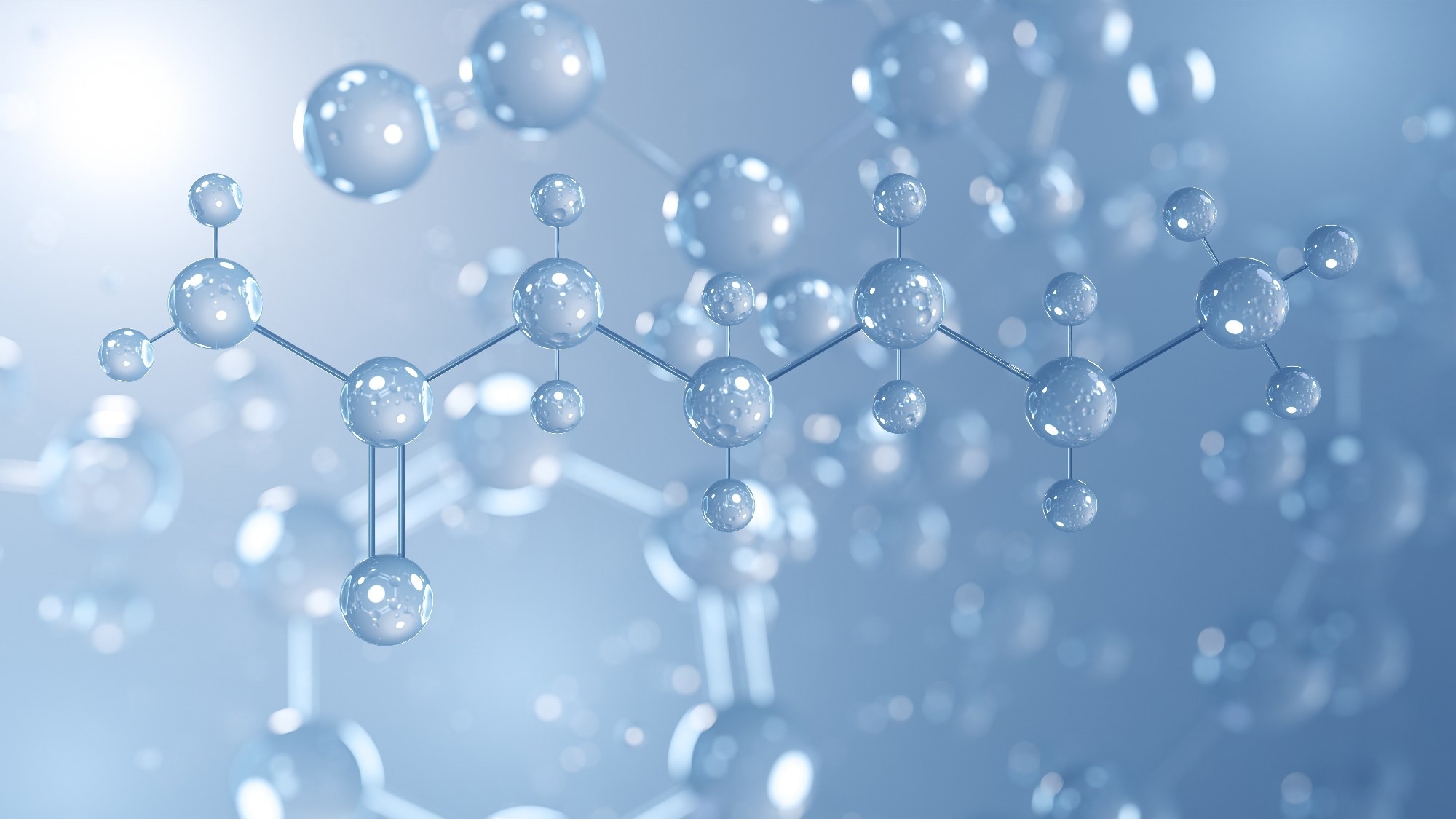 By Muhammad OsamaReviewed by Lexie CornerJun 2 2025
By Muhammad OsamaReviewed by Lexie CornerJun 2 2025A study published in Small examined how modifying the surface charge of covalent organic frameworks (COFs) affects platinum (Pt) photodeposition and photocatalytic hydrogen evolution.
The researchers adjusted the linkage chemistry to influence charge interactions and catalytic activity. This work contributes to the development of COF-based systems for hydrogen production.
 Image Credit: SergeiShimanovich/Shutterstock.com
Image Credit: SergeiShimanovich/Shutterstock.com
The Role of COFs in Hydrogen Evolution
COFs are of interest for photocatalytic hydrogen evolution reactions (HER) due to their porous crystalline structures, chemical stability, and tunable optoelectronic properties. Their design flexibility enables optimization of light absorption, charge separation, and catalytic performance.
These attributes support their use in hydrogen production via photocatalytic water splitting, which uses sunlight to generate hydrogen. Although improvements have been made, the role of surface charge in interfacial interactions and metal co-catalyst deposition is not yet fully understood, suggesting an area for further investigation.
Investigating COF Modifications and Their Effects
The researchers developed a thiophene-based COF system in which imine linkages were converted to amide linkages via Pinnick oxidation using sodium chlorite. This modification altered the COF’s surface charge and photocatalytic properties.
Two COF variants—Imine-BDT-ETTA and Amide-BDT-ETTA—were synthesized. The imine-linked COF was produced through a solvothermal reaction between benzo[1,2-b:4,5-b′]-dithiophene-2,6-dicarboxaldehyde (BDT) and a tetra-amine-functionalized tetraphenylethylene (ETTA) unit. Oxidation of the imine linkages yielded a new amide-linked structure with modified protonation characteristics.
The COFs were analyzed using powder X-ray diffraction (PXRD), nitrogen physisorption, Fourier-transform infrared (FT-IR) spectroscopy, solid-state nuclear magnetic resonance (NMR), and zeta potential analysis to assess structural features, porosity, and surface charge changes. Photocatalytic performance was evaluated under visible light (λ > 420 nm, 100 mW cm-2), showing that linkage conversion influenced Pt photodeposition and catalytic activity.
Photocatalytic Performance After Linkage Conversion
Converting imine to amide linkages in the BDT-ETTA COFs led to increased hydrogen evolution rates. The Amide-BDT-ETTA COF achieved a HER rate of 0.95 mmol g-1 h-1, compared to 0.22 mmol g-1 h-1 for the imine-linked counterpart, an increase of more than 300 %. This difference was attributed to changes in surface charge, hydrophilicity, and interfacial interactions.
Zeta potential analysis showed that the imine-linked COF became positively charged under acidic conditions due to protonation, whereas the amide-linked COF maintained a negative surface charge. These charge characteristics influenced Pt photodeposition: the positively charged COF promoted small, uniform Pt particles (1–2 nm), while the negatively charged variant produced larger Pt particles (up to 100 nm). Though larger particles may reduce electron mobility, they may also enhance hydrogen production kinetics, such as during the Volmer step.
The amide-linked COF also showed improved hydrophilicity due to polar carbonyl groups, resulting in better water interaction and dispersion in aqueous solutions. Improved light absorption and more effective charge separation further contributed to its higher photocatalytic activity.
Applications in Energy and Photocatalysis
These findings provide insights for designing COF-based photocatalytic systems for hydrogen production. Modifying surface charge through linkage chemistry allows researchers to influence the size and distribution of metal co-catalysts and optimize reaction conditions.
This approach to electrostatic control may also be applicable to other photocatalytic processes, such as carbon dioxide reduction and the breakdown of organic pollutants. The structural tunability of COFs supports the design of catalysts suited to specific energy conversion and storage applications, suggesting potential for broader use in clean energy systems.
Download your PDF copy now!
Conclusion and Future Directions
The study demonstrates the role of surface charge modulation in improving the photocatalytic efficiency of COFs for hydrogen evolution. Transitioning from imine to amide linkages improved structural stability and enhanced Pt photodeposition, resulting in increased hydrogen production rates.
This approach offers a scalable and adaptable method for adjusting interfacial charge properties and designing more efficient photocatalysts. Future research may explore alternative linkages, charge-transfer dynamics, and functional group modifications to further optimize energy conversion.
As interest in clean energy continues to grow, innovations in COF design, such as tailored surface chemistry and material integration, may support the development of cost-effective, high-performance photocatalytic systems. The results underscore the importance of interfacial engineering in advancing materials for renewable energy and environmental technologies.
Journal Reference
Paliušytė, K., et al. (2025). Surface Charge Modulation in Covalent Organic Frameworks for Controlled Pt-Photodeposition and Enhanced Photocatalytic Hydrogen Evolution. DOI: 10.1002/smll.202500870, https://onlinelibrary.wiley.com/doi/10.1002/smll.202500870
Disclaimer: The views expressed here are those of the author expressed in their private capacity and do not necessarily represent the views of AZoM.com Limited T/A AZoNetwork the owner and operator of this website. This disclaimer forms part of the Terms and conditions of use of this website.